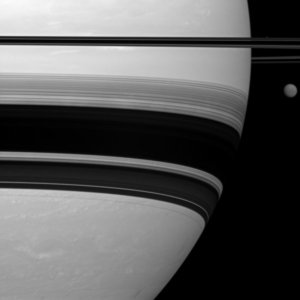Accept all cookies Accept only essential cookies See our Cookie Notice

About ESA
The European Space Agency (ESA) is Europe’s gateway to space. Its mission is to shape the development of Europe’s space capability and ensure that investment in space continues to deliver benefits to the citizens of Europe and the world.
Highlights
ESA - United space in Europe
This is ESA ESA facts Member States & Cooperating States Funding Director General Top management For Member State Delegations European vision European Space Policy ESA & EU Space Councils Responsibility & Sustainability Annual Report Calendar of meetings Corporate newsEstablishments & sites
ESA Headquarters ESA ESTEC ESA ESOC ESA ESRIN ESA EAC ESA ESAC Europe's Spaceport ESA ESEC ESA ECSAT Brussels Office Washington OfficeWorking with ESA
Business with ESA ESA Commercialisation Gateway Law at ESA Careers Cyber resilience at ESA IT at ESA Newsroom Partnerships Merchandising Licence Education Open Space Innovation Platform Integrity and Reporting Administrative Tribunal Health and SafetyMore about ESA
History ESA Historical Archives Exhibitions Publications Art & Culture ESA Merchandise Kids Diversity ESA Brand Centre ESA ChampionsLatest
Space in Member States
Find out more about space activities in our 23 Member States, and understand how ESA works together with their national agencies, institutions and organisations.
Science & Exploration
Exploring our Solar System and unlocking the secrets of the Universe
Go to topicAstronauts
Missions
Juice Euclid Webb Solar Orbiter BepiColombo Gaia ExoMars Cheops Exoplanet missions More missionsActivities
International Space Station Orion service module Gateway Concordia Caves & Pangaea BenefitsLatest
Space Safety
Protecting life and infrastructure on Earth and in orbit
Go to topicAsteroids
Asteroids and Planetary Defence Asteroid danger explained Flyeye telescope: asteroid detection Hera mission: asteroid deflection Near-Earth Object Coordination CentreSpace junk
About space debris Space debris by the numbers Space Environment Report In space refuelling, refurbishing and removingSafety from space
Clean Space ecodesign Zero Debris Technologies Space for Earth Supporting Sustainable DevelopmentLatest
Applications
Using space to benefit citizens and meet future challenges on Earth
Go to topicObserving the Earth
Observing the Earth Future EO Copernicus Meteorology Space for our climate Satellite missionsCommercialisation
ESA Commercialisation Gateway Open Space Innovation Platform Business Incubation ESA Space SolutionsLatest
Enabling & Support
Making space accessible and developing the technologies for the future
Go to topicBuilding missions
Space Engineering and Technology Test centre Laboratories Concurrent Design Facility Preparing for the future Shaping the Future Discovery and Preparation Advanced Concepts TeamSpace transportation
Space Transportation Ariane Vega Space Rider Future space transportation Boost! Europe's Spaceport Launches from Europe's Spaceport from 2012Latest

Cassini instrument overview
Thank you for liking
You have already liked this page, you can only like it once!
Cassini's science instruments:
Cassini Plasma Spectrometer (CAPS) explores plasma (highly ionised gas) within and near Saturn’s magnetic field.
Cosmic Dust Analyzer (CDA) studies ice and dust grains in and near the Saturn system.
Composite Infrared Spectrometer (CIRS) measures infrared energy from the surfaces, atmospheres and rings of Saturn and its moons to study their temperature and compositions.
Ion and Neutral Mass Spectrometer (INMS) examines neutral and charged particles near Titan, Saturn and moons to learn more about their extended atmospheres and ionospheres.
Imaging Science Subsystem (ISS) takes pictures in visible, near-ultraviolet and near-infrared light.
Dual-Technique Magnetometer (MAG) studies Saturn’s magnetic field and its interactions with the solar wind, the rings and the moons of Saturn.
Magnetospheric Imaging Instrument (MIMI) images Saturn’s magnetosphere and measures interactions between the magnetosphere and the solar wind, a flow of ionised gases streaming out from the Sun.
Cassini Radar (RADAR) maps surface of Titan using radar imager to pierce veil of haze. Also used to measure heights of surface features.
Radio and Plasma Wave Spectrometer (RPWS) investigates plasma waves (generated by ionised gases flowing out from the Sun or orbiting Saturn), natural emissions of radio energy and dust.
Radio Science Subsystem (RSS) searches for gravitational waves in the Universe; studies the atmosphere, rings and gravity fields of Saturn and its moons by measuring telltale changes in radio waves sent from the spacecraft.
Ultraviolet Imaging Spectrograph (UVIS) measures ultraviolet energy from atmospheres and rings to study their structure, chemistry and composition.
Visible and Infrared Mapping Spectrometer (VIMS) identifies the chemical compositions of the surfaces, atmospheres and rings of Saturn and its moons by measuring colours of visible light and infrared energy emitted or reflected.
Explore Cassini’s instruments with this interactive tool.
-
CREDIT
ESA -
LICENCE
ESA Standard Licence

Saturn and Titan, side by side

Saturn’s rings and Prometheus

Gazing down on Saturn's rings

Cassini impact site – infrared image















 Germany
Germany
 Austria
Austria
 Belgium
Belgium
 Denmark
Denmark
 Spain
Spain
 Estonia
Estonia
 Finland
Finland
 France
France
 Greece
Greece
 Hungary
Hungary
 Ireland
Ireland
 Italy
Italy
 Luxembourg
Luxembourg
 Norway
Norway
 The Netherlands
The Netherlands
 Poland
Poland
 Portugal
Portugal
 Czechia
Czechia
 Romania
Romania
 United Kingdom
United Kingdom
 Slovenia
Slovenia
 Sweden
Sweden
 Switzerland
Switzerland

























